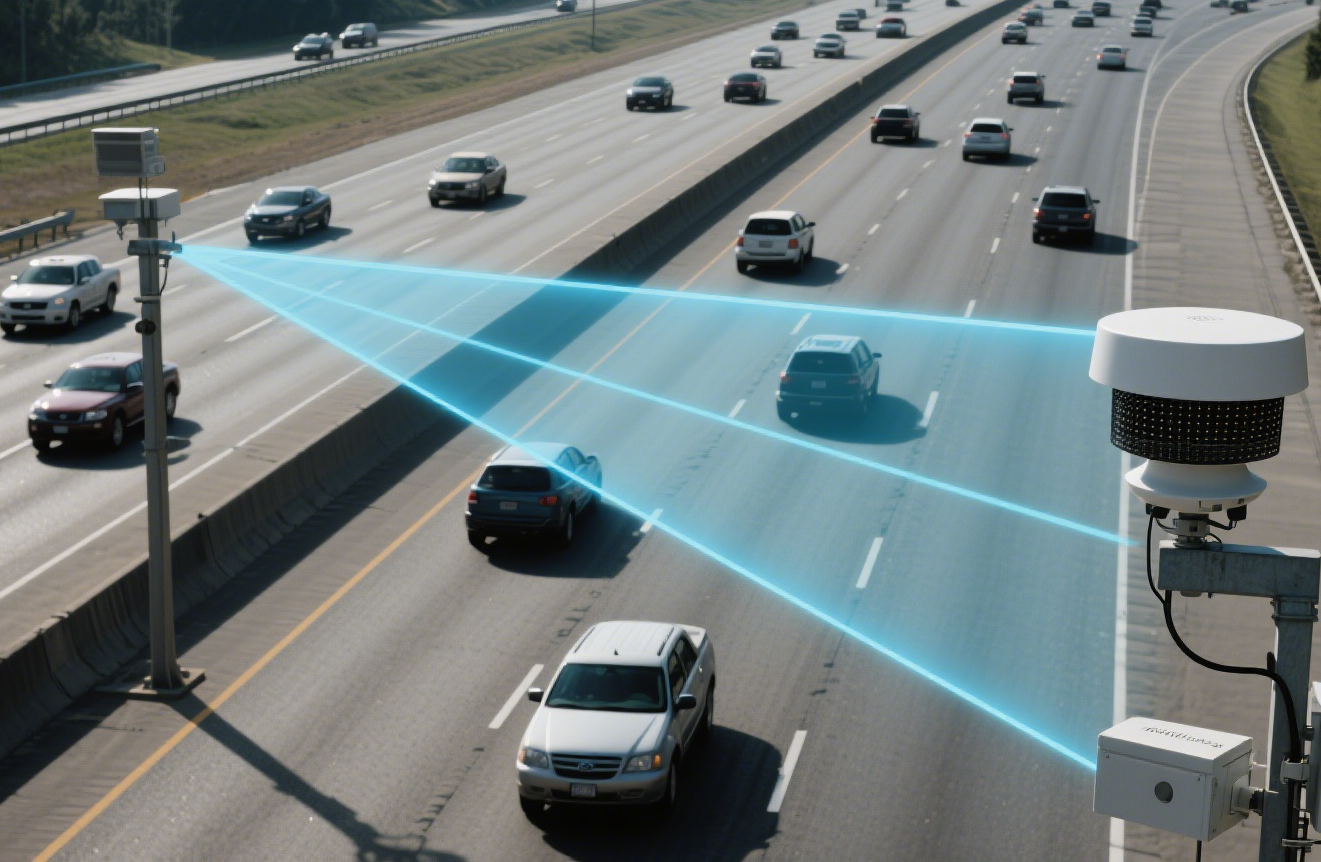Introduction: The Challenges of Multi-Lane Traffic Speed Measurement
Measuring vehicle speed in multi-lane traffic presents multiple technical and operational challenges:
-
Vehicle Proximity: Cars in adjacent lanes often travel only 3–5 meters apart at highway speeds. Standard radar may conflate multiple vehicles into one measurement.
-
Variable Speeds: Vehicles accelerate and decelerate differently, and heavy trucks and motorcycles require distinct tracking algorithms.
-
Environmental Factors: Rain, fog, dust, and glare can reduce optical or LiDAR accuracy.
-
Multipath Reflection: Urban highways with concrete barriers and signage cause radar reflections, potentially leading to false readings.
These challenges raise a central question for traffic authorities and engineers:
“Can millimeter-wave radar provide precise, real-time vehicle speed measurements across multiple lanes under real-world conditions?”
Why Millimeter-Wave Radar Excels
Linpowave V200 mmWave radar addresses these challenges through several key capabilities:
-
Extended Detection Range: 0.4–300 m allows early detection of vehicles approaching from a distance, crucial for real-time speed analysis.
-
High Speed Resolution: Doppler-based measurements achieve ±0.5 km/h accuracy. This level of precision enables enforcement and traffic analytics simultaneously.
-
Multi-Lane Multi-Target Tracking: Capable of tracking 6–8 vehicles per radar unit across multiple lanes, differentiating vehicles by lane and speed.
-
All-Weather Operation: Unlike cameras or LiDAR, mmWave radar remains accurate in rain, fog, dust, or glare, ensuring continuous operation.
-
Low Latency: 50 ms reaction time supports real-time monitoring and instant speed reporting.
-
Compact & Lightweight: At 70×50×5.5 mm and 15 g, installation on gantries, poles, or mobile units is straightforward, without requiring heavy structural reinforcement.
-
Energy Efficient: 4 W average power allows continuous operation with minimal energy cost.
Quantitative Performance Metrics
Recent field deployments provide concrete performance data:
| Metric | Value |
|---|---|
| Detection Range | 0.4–300 m |
| Speed Accuracy | ±0.5 km/h |
| Multi-Lane Coverage | 6–8 lanes simultaneously |
| Reaction Time | ≤50 ms |
| False Detection Rate | <3% in dense traffic |
| Missed Detection Rate | <1% for vehicles wider than 1.5 m |
Case Study: On a six-lane expressway in a metropolitan area, Linpowave radar tracked each vehicle’s speed and lane assignment in real time. Despite heavy congestion and variable vehicle types (cars, buses, trucks), the radar maintained lane accuracy >97% and speed accuracy ±0.5 km/h. Cameras alone missed up to 15% of vehicles during low-light conditions, while traditional radar misclassified up to 20% of closely spaced vehicles.
This demonstrates that mmWave radar provides reliable, high-resolution traffic data, critical for traffic management, law enforcement, and congestion analysis.
Deployment and Optimization Strategies
To maximize accuracy in multi-lane traffic, the following strategies are recommended:
-
Optimal Mounting Height and Angle
-
Mount radars 5–7 meters above the roadway at a slight downward tilt. This minimizes occlusion while covering multiple lanes.
-
-
Advanced Signal Processing
-
Apply FFT analysis and Doppler filtering to separate closely spaced vehicles and suppress multipath reflections.
-
-
Lane Assignment Algorithms
-
Use multi-target tracking combined with lane-specific predictive algorithms to maintain accurate speed readings for each lane.
-
-
Sensor Fusion (Optional)
-
Combine radar with camera or LiDAR systems for traffic violation identification or vehicle classification.
-
-
Regular Calibration and Health Checks
-
Continuous monitoring of radar performance ensures speed accuracy remains within ±0.5 km/h.
-
By implementing these strategies, agencies can maintain high data integrity, even in complex urban traffic environments.
Real-World Applications and Value
-
Highway Enforcement
-
Accurate multi-lane speed measurement enables real-time detection of speeding vehicles across all lanes without multiple sensors.
-
-
Traffic Flow Analysis
-
Continuous speed data informs congestion modeling, adaptive signal timing, and predictive traffic management.
-
-
Incident Detection
-
Sudden speed drops or irregular traffic patterns trigger alerts for accidents or stalled vehicles.
-
-
Cost Efficiency
-
One mmWave radar unit can replace multiple induction loops or cameras, reducing infrastructure and maintenance costs.
-
Example: Deploying Linpowave radar at a six-lane urban expressway reduced lane misclassification errors by over 90% compared to conventional radar, while maintaining continuous operation in rain and fog.
Conclusion
Millimeter-wave radar is a highly reliable solution for multi-lane vehicle speed detection, offering:
-
High resolution and ±0.5 km/h speed accuracy
-
Simultaneous multi-lane, multi-target tracking
-
All-weather operation with low latency
-
Compact, lightweight, and energy-efficient design
Through optimized mounting, advanced signal processing, lane assignment algorithms, and optional sensor fusion, mmWave radar enables accurate, real-time traffic monitoring, improving safety, efficiency, and enforcement effectiveness.



